![]()
The Words of the Sun Myung Moon after 2012
|
|
The Words of the Sun Myung Moon after 2012 |
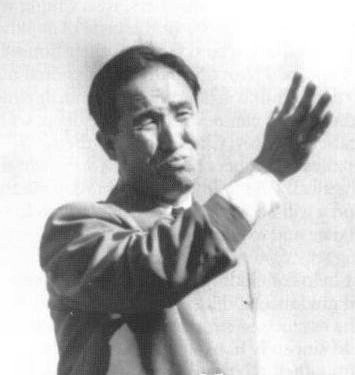
The
late Rev. Sun Myung Moon's lessons on Godism are a shortcut to the
unification of North Korea and South Korea
The Unification of Korea Federation, which celebrated its twenty-seventh anniversary this year, was formerly the International Federation for Victory over Communism (IFVOC), which was founded by the late Rev. Sun Myung Moon in 1968 and played a leading role in the reunification movement in the 1970s and 1980s.
With a commitment to prepare for reunification, the Unification of Korea Federation has been working toward increasing the unification consciousness among people and improving the welfare of North Koreans. Mr. Yong Su Seol, who was elected the president of the Unification of Korea Federation last December 27, is speeding up all activities to prepare the Unification of Korea Federation for a new leap in becoming a leading organization in the reunification movement.
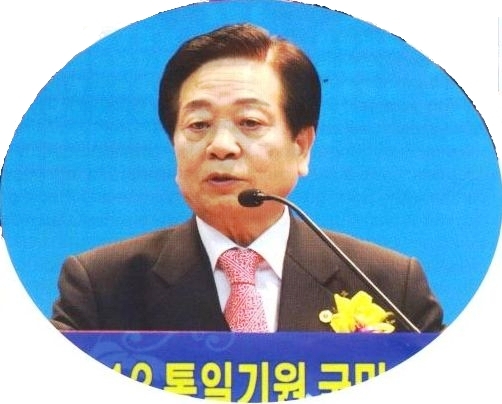
Dr.
Yong Su Seol, chairman, Unification of Korea Federation
The International Federation for Victory over Communism (IFVOC) was a civic group founded by Rev. Moon of the Unification Church. As part of the reunification efforts conducted when the two Koreas were still locked in a frigid relationship, the IFVOC conducted academic research into the communist system and ideology, critiqued them and earnestly carried out educational activities to instill anti-communist awareness in people. In this way, the IFVOC became a leading civic group in the reunification movement of the 1970s and 1980s.
IFVOC was established at a time when North Korean military attacks on South Korea had reached their peak with the Shin Jo Kim incident,' a major North Korean armed provocation. It was then that Rev. Moon opened the Central Training Institute in Sutaekri, in the city of Gun, in Gyeonggi Province, which has a seating capacity of five hundred. The aim was that South Koreans be equipped with an ideology that can thoroughly stop communism. After the opening of this training center, IFVOC played a significant role in imparting anti-communist ideology by holding three-day seminars, which included lectures and training on victory over communism for the Korean people.
In the 1970s, the cold relationship between North Korea and South Korea thawed completely as a result of the July 4 North -- South Joint Statement signed by President Chung Hee Park's government and the North Korean government under Kim Il-sung in 1972. Given the reconciliation between the two Koreas, Rev. Moon thought that a physical threat no longer existed and that it was time to prepare for a new era of unification. Thus, he established the Unification of Korea Federation on May 15, 1987 as a development of IFVOC.
After its establishment, the Unification of Korea Federation was in the vanguard of the reunification movement centered on Rev. Moon's unification ideology, which he dubbed Godism. Godism emphasizes that true peace for humankind cannot be realized by the left wing or the right wing but only through the head or the central ideology of mutual existence, mutual prosperity and mutual righteousness; only within Godism can the values of North Korea and South Korea become one and can actual unification occur.
Rev. Moon, who had proclaimed the "end of communism" in August 1985, met the Soviet Union's General Secretary of the Communist Party Mikhail Gorbachev in April 1990 and met General Secretary of the Workers Party of North Korea Kim Il-sung during a ten-day visit to North Korea in November 1991. During this meeting, Rev. Moon persuaded Kim Il-sung to agree to five clauses that were then broken down into the fifteen clauses that were accepted for the June 15 North -- South Joint Declaration. This was all possible because the clauses were based on the Unificationist ideology.
The Unification of Korea Federation then experienced twelve years of stagnation in its unification endeavors starting from 2000. Fortunately, Mr. Yong Su Seol, the newly elected eighth president, is leading the organization in preparing for a new leap. Expressing his personal beliefs, President Seol said, "With all my zeal and conviction, I will cultivate the capacity to lead this unification era, band together with many other organizations working for unification and realize the unification that is desired by South Koreans and the unification desired by God."
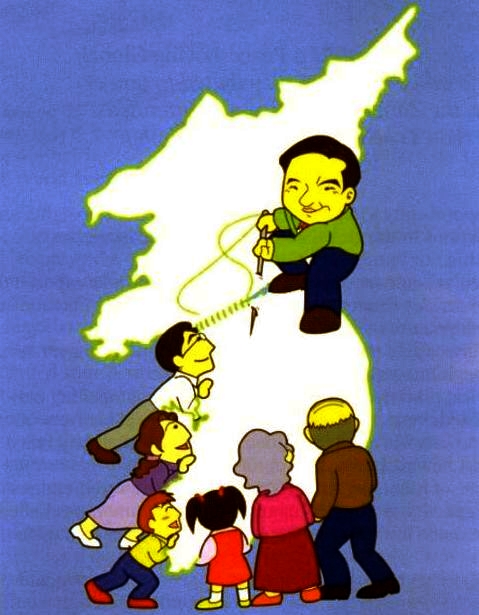
As a unification-education movement activist, Mr. Seol has given around twenty thousand lectures in that field alone. The maximum number of lectures he gave in a year was 899.
Though he turned seventy this year, his passion transcends his age. In his house is a framed epigraph that reads, "I'll go anywhere I'm called."
Yong Su Seol's father, Jin Hong Seol, had been an activist in the anti-trusteeship-campaigns. Following his father's example, Yong Su Seol has dedicated his entire life to the campaign to educate the people on the issue of Korean reunification starting in his late twenties. Mr. Seol's decision to dedicate his life completely to the unification movement has its origins in the Korean War when he was ten years old.
Mr. Jin Hong Seol earned a fortune in Japan. He was an anti-communist activist who greatly supported President Syngman Rhee's government. Because he was the president of a Korean youth group, a patriotic organization, Mr. Seol conducted activities in Sun-chang County. It was during this period that the Korean War broke out and most of the land down to Jeolla Province except for Busan rapidly fell into the hands of the North Korean People's Army. The North Korean's control of South Korea continued for three months, during which Mr. Seol was incarcerated in a village government office that had been converted into a temporary jail.
Yong Su Seol was ten years old at that time. He had to walk for two kilometers to his father's cell, packing his book bag with a lunch box to give his father every day. One summer day, in addition to the lunch box he took with him a ripe watermelon from the family garden for his father. When a prison guard saw what he had brought, he said, "Hey reactionary! You were told to bring only rice, what is this?" The guard blocked him from entering the jail.
Young Yong Su Seol replied, "I grew this watermelon with all my heart and have brought it as a present for my father." Snatching the watermelon away, the guard said, "Reactionaries cannot eat this!" and threw the watermelon onto the ground, smashing it.
Yong Su Seol crumpled to the ground and cried for about an hour. Ever since, the question "What is communism, really?" has plagued his thoughts. It followed him through courses he took in high school and in college. In 1961, when he was twenty-one, he met Rev. Moon and studied the communist dialectic, the materialistic conception of history and other communist ideological concepts.
After this, Yong Su Seol carried out activities for the anticommunist education movement as the Gun-ok District leader. He was later chosen by Rev. Moon to become a lecturer for IFVOC. He completely dedicated himself to this educational field and taught a million people through numerous lectures before he was made the director of the Central Training Institute after undergoing management training.
While working as the president of the Segye Times from 2001 to 2003, he visited North Korea and discussed unification with the late Mr. Yong Sun Kim, an authoritative figure in North Korea. Even after that, he met other influential figures such as Mrs. Jang Jae Yeon in North Korea on several occasions. He looked for ways to promote cooperation and reconciliation between North Korea and South Korea. He was also one of the representatives on the South Korean committee in relation to the June 15 North -- South Joint Declaration.
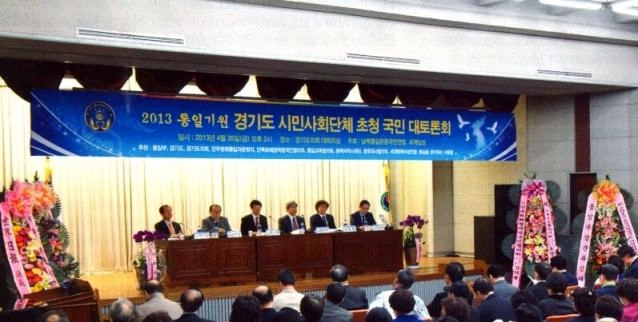
A
National Debate on Korea's Reunification took place in Gyeonggi
Province on April 26. These debates will continue in various
locations to help foster a true understanding of how to deal with
unification and how people living on the Korean Peninsula can
contribute to it.
On January 22, forty-two days after North Korea launched the Unlia-3 rocket, the UN Security Council unanimously passed a resolution to expand and strengthen sanctions against North Korea for launching it. According to the South Korean Ministry of Foreign Affairs and Trade, the UN Security Council condemned North Korea's long-range launch on December 12, 2012, and issued Security Council Resolution 2087 to strengthen and expand earlier sanctions on North Korea. This was unanimously accepted by the fifteen Security Council member nations. They warned North Korea that significant steps would be taken if it undertook another nuclear test or launched another missile.
On the same day the UN Security Council issued the resolution to strengthen sanctions against North Korea, President Seol invited civic groups to the National Assembly Memorial Hall and opened a national debate under the title "The Rapidly Changing Northeast Asian Situation and the Direction in which Unification of the Korean Peninsula should be pursued." It received a great deal of attention.
With President Geun Hye Park's inauguration just around the corner, this national debate was a significant and timely event that brought together both government figures and average citizens in the common search for the right direction for the reunification campaign to take. It provided an opportunity for the incoming government administration and civic groups to assess how they can resolve inter-Korean relations in the rapidly changing situation in Northeast Asia.
During his welcoming remarks, President Seol said, "On February 22, influential leaders from around the world and leaders from all walks of life will visit Korea to wish peace to the Korean Peninsula." He went on to say, "The Unification of Korea will become a stepping stone that connects Korean leaders of the unification campaign, who have various approaches, to worldwide peace-seeking activists and will guide the North -- South unification campaign as a global unification movement."
Next, Segye Times President Byeong Su Kim said, "Everyone is paying keen attention to how the government of President-elect Genii Bye Park, who will be inaugurated next month, will resolve the tense relationship with North Korea that has been aggravated over a long period." He also emphasized that "being in the midst of the unstable Northeast Asian situation, the Korean Peninsula needs to first strengthen its internal security and build up strength that can firmly protect Korea from any provocation or invasion." He went on to say, "At the same time, we must steadily make preparations so that the hope of our people, the unification of North Korea and South Korea, can be realized as soon as possible."
Additionally, Mr. Hi Tack Hyun, the special presidential assistant on unification affairs, National Assemblyman Myeong Choel Jo representing the New Frontier Party,'" and Minister Seung Chun Park of the Ministry of Patriots and Veterans Affairs emphasized their hope for unification through their congratulatory remarks.
Mr. Seong Jang Jeong, senior researcher of the Sejong Institute, gave a presentation on the Reshuffling of North Korean and South Korean Leadership and the Direction of the Unification Movement for Government and Civic Groups. Mr. Seong Ryeol Jo, a senior researcher of the Institute for National Security Strategy gave a presentation on Changes in Northeast Asia Following the Reshuffling of Power in Neighboring Countries.
The actual debate propositions were given by Ms. Lee Mi Kyung Lee, who is a professor at the Institute of Unification Education of the government's Unification Ministry, Professor Yoo Hwan Ko of Dongguk University, Professor Hak Song Kim of the Peace Security Graduate School in Chungnam University, Professor Yoon Hwang of Sun Moon University and other experts. Around four hundred people were invited, including around a hundred FFWPU-related groups, people involved in civic organizations and well-known figures in academic circles.
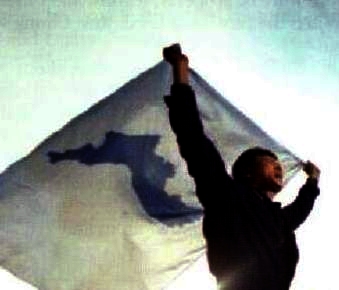
Question: What might we change to improve the image that people have of unification?
Unification means two becoming one," which involves narrowing the differences and widening the common interests between each other. To be more detailed, the practices the two Koreas shared for 1,300 years can be regarded as their common interests. We can regard our perceptions and worldviews as differences. For example, the North Korean people move "all for the sake of one" under the instructions of the leader based on Kim Il Sung's juche ideology. When South Korean students are asked which historical figures they respect most, King Sejong or General Sun Shin Lee usually ranks at the top. North Koreans, however, choose Stupid On-da North Koreans who are thoroughly class-conscious, prefer General On-dal who was originally of a low, or proletariat, class.
Then the question is, How can we overcome our differences with North Korea? Unification does not mean completely becoming one; it means integrating in a mosaic form and living among a mix of different colors like a rainbow. It is important that we get rid of the notion that unification may put everyone in economically difficult circumstances.
Question: Many people are concerned about the cost of unification.
The unification method should be changed from the prevailing expectation of a sudden and complete unification to that of a gradual unification. In the early phase, the two Koreas may maintain their respective systems. South Korea should invest 50 trillion Won on a yearly basis to equip North Korea with basic infrastructure. This will improve the North Koreans' lives, raising their GDP, and naturally enabling them to cultivate their own capacity.
In addition, North Korea possesses abundant resources. If our technology and capital combines with North Korea's resources and her labor force, high profits will be generated. By importing resources from Siberia, a repository of raw materials, using the railway, it will also be possible to build a transportation hub connecting the continent and seas with our technology. Such concerns arise because most people only think of the cost of unification but forget to consider the economic benefits to be obtained through unification.
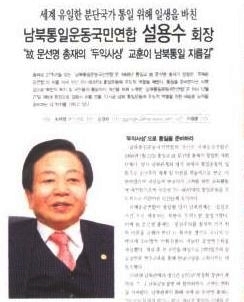
Question: Please compare the unification policies of Myung Bak Lee's government (2008-2013) and Geun Hye Park's government (2013-2018).
From the very beginning, President-elect Park set up a rule: "Resolve problems through exchange." The previous administration under President Lee had set a rule that apologizing should come before any exchange. President-elect Park goes for exchange first and apologies later. This is a great change indeed. The North -- South relationship is a problem that we must resolve within ourselves; support from neighboring countries is surely needed, but we must not depend on them. Therefore, I believe that President Park's rule in resolving the North -- South problem to be proper for the present relationship between the two countries.
I am not saying that what was done in the past was wrong or that the present is right. The circumstances in the past brought about the past results. Though it is a bit late, if we can quickly improve the North -- South relationship, build up trust again between each other, meet the North Korean policy leaders and have dialog, the North -- South relationship will quickly improve.